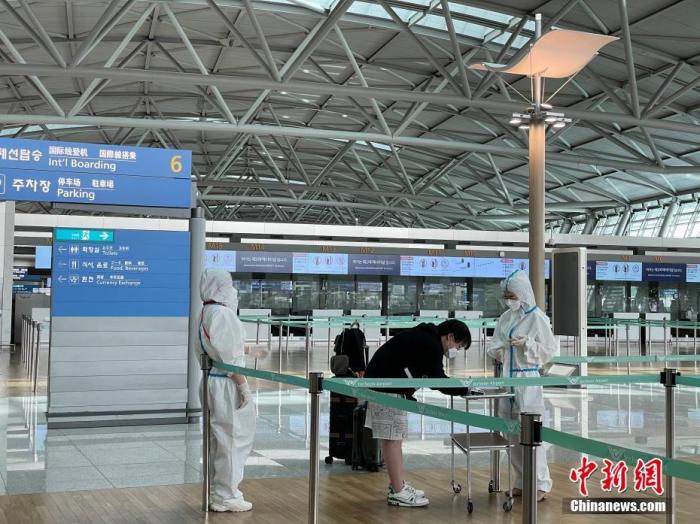Chinanews.com, November 11, comprehensive Korean media reported that since the South Korean government launched the "coexistence with the new crown" epidemic prevention model in early November, the number of critically ill patients has increased day by day. Plan” standard.
Experts warned that the South Korean government has not yet formulated the standards for an "emergency plan" and that it thinks that the current medical system can stably respond to the epidemic, which is regrettable.
On May 7, South Korea's Incheon International Airport staff strictly implemented epidemic prevention measures.
Photo by China News Agency reporter Liu Xu
According to the report, from September 1st to November 5th, the number of critically ill cases remained at the level of more than 300 cases, but increased to 411 cases on the 6th and exceeded 400 cases for 5 consecutive days.
As of 0:00 on the 10th, the number of critically ill cases in China has reached 460, a record high.
Among the 460 critically ill cases, more than 82% are elderly people over 60 years old.
In addition, the number of new coronavirus cases in South Korea rose to more than 2,000 in a single day after three days.
South Korea’s Central Epidemic Prevention and Control Headquarters stated that as of 0:00 on the 10th, South Korea has added 2,425 new cases of new crowns, including 2,409 local infections and 16 imported cases.
There were 14 new deaths in a single day, and the total number of deaths was 3,012, with a death rate of 0.78%.
The Korean epidemic prevention department believes that loose epidemic prevention measures have led to an increase in the scale of confirmed cases. Due to the earlier vaccination time for the elderly, the protection effect has been reduced. Coupled with the influence of seasonal factors, the elderly face higher health risks.
South Korean Prime Minister Kim Fu-gyeom presided over the meeting of the Central Disaster Safety Countermeasures Headquarters on the 10th and stated that the deterioration of various epidemic prevention indicators such as severe cases of the new crown, deaths, and basic number of virus reproduction is higher than expected.
However, as of 5 p.m. the day before, the utilization rate of intensive care beds in the country has reached 57.2%.
In the metropolitan area where the number of confirmed cases is relatively concentrated, Seoul City is 71.3%, Incheon City is 73.4%, and Gyeonggi Province is 68.4%.
This is close to the government's original standard for suspending the restoration of daily order and starting the "emergency plan", that is, the utilization rate of critically ill beds has reached 75%.
Kim Woo-ju, a professor of infection medicine at the Guro Hospital of Korea University, warned that the South Korean government has not yet formulated the standards for an "emergency plan" and that the current medical system can stably respond to the epidemic, which is regrettable.
Experts pointed out that the recent increase in the number of confirmed diagnoses is expected. Only by improving the medical response mechanism as soon as possible and stepping up the vaccination of high-risk groups to strengthen the injection, the "coexistence with the new crown" epidemic prevention model can succeed.

